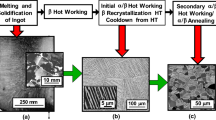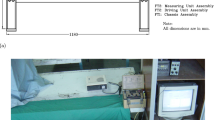Abstract
The fatigue crack initiation period, previously thought to be a necessary precursor to fatigue crack propagation and eventual failure, is considered here to be a negligible phase in the fatigue failure of polycrystalline metals. Rather this period is considered to be the propagation of a defect of microstructural dimensions by a variety of processes. The significance of this alternative view is examined in relation to corrosion fatigue, models of short crack growth, different loading modes, and the enhancement of fatigue resistance by surface shot-peening treatments. In both inert and aggressive environments, the fatigue lifetime of plain steel specimens of various strengths and treatments is predominantly determined by the early propagation of short cracks of microstructural dimensions. Microstructural fracture mechanics, rather than continuum mechanics, can quantify both pit growth and Stage I shear crack growth behavior before the defect reaches the dominant microstructural barrier which controls the fatigue behavior of the material. The important processes that determine lifetime are those that are strongly dependent on the synergism between the aggressive environment and cyclic stresses; these are the pitting, Stage I and the Stage I-to-Stage II crack propagation processes. A model has been produced to quantify these three important stages of lifetime named above. Under torsion loading, where Stage I cracks prefer to propagate along the surface, an intermittent series of deceleration/acceleration events of crack growth occur across the first few grain boundaries until the defect is blocked in its further development by a major microstructural barrier. When this barrier is breached, the environmentally-assisted Stage I crack rapidly becomes a Stage II crack. Under push-pull loading, the Stage I environmentally-assisted crack can propagate faster into the bulk material and, as a consequence, the transition to a Stage II environmentally-assisted crack is rapid thereby eliminating the need for the intermittent process observed under torsion loading. With no environmentally-assisted fatigue processes (i.e., testing in air) reversed torsion and push-pull loading test data can best be correlated by a von Mises criterion. Corrosion fatigue lifetimes can best be correlated by a Rankine (tensile stress) criterion. Shot-peening enhances the corrosion fatigue resistance of polycrystalline metals by inducing residual compressive stresses in the surface and creating numerous and more rapidly formed microcracks. This is probably caused by the presence of variously oriented plastically deformed bands within the surface microstructure and “short crack-short crack” interactions both of which delay the progress of the dominant crack toward its final Stage II phase.
Similar content being viewed by others
References
R. Akid,The Initiation and Growth of Short Fatigue Cracks in an Aqueous-Saline Environment, Ph. D. Thesis, University of Sheffield (1987).
R. Akid and K. J. Miller, “The effect of pH on the initiation and growth of short fatigue cracks,” in:Fracture Behaviour and Design of Materials and Structures, Vol. III, Eng. Mater. Adv. Service (EMAS) (1990), pp. 1403–1409.
R. Akid and Murtaza, “Environment-assisted short crack growth behaviour of a high strength steel,” in: K. J. Miller and E. R. de los Rios (editors),Short Fatigue Cracks, ESIS Publication 13, MEP Institution Mechanical Engineers, London, (1992), pp. 193–207.
R. Akid and X. J. Wu, “An investigation of short fatigue crack growth of a high strength marine steel in seawater,” in:Structural Materials in Marine Environments, The Institute of Materials, London (1994), pp. 330–339.
R. Akid, Y. Z. Wang, and U. S. Fernando, “The influence of loading mode and environment on short fatigue crack growth in a high strength steel,” in: T. Magnin and J. M. Gras (editors),Corrosion-Deformation Interactions, Les Editions de Physique (1993), pp. 659–670.
M. W. Brown, “Interfaces between short, long and non-propagating cracks,” in: K. J. Miller and E. R. de los Rios (editors),The Behaviour of Short Fatigue, Cracks, EGF Publication, 1, MEP Institution Mechanical Engineers, London (1986), pp. 423–439.
M. W. Brown and K. J. Miller, “A theory for fatigue failure under multiaxial stress strain conditions,”Proc. Inst. Mech. Engrs.,187, 745–750 (1973).
M. W. Brown and K. J. Miller, “Initiation and growth of cracks in biaxial fatigue,”Fatigue Fract. Eng. Mater. Struct.,1, 231–246 (1979).
L. F. Coffin, “Fatigue at high temperatures,” in: A. E. Carden, A. J. McEvily, and C. H. Wells (editors),Fatigue at Elevated Temperatures, ASTM, STP 520, American Society for Testing and Materials (1973), pp. 5–34.
U. R. Evans and M. T. Simnad, “The mechanisms of corrosion fatigue of mild steel,”Proc. R. Soc. Lond.,A188, 372–392 (1947).
P. J. E. Forsyth, “A two-stage process of fatigue crack growth,” in:Proc. Crack Propagation Symp., The College of Aeronautics, Cranfield (1961), pp. 76–94.
H. J. Gough, “Corrosion fatigue of metals,”J. Inst. Metals,49, 17–92 (1932).
B. P. Haigh, “Experiments on the fatigue of brasses,”J. Inst. Metals,18, 55–77 (1917).
M. M. Hammouda and K. J. Miller, “Elastic-plastic fracture mechanics analyses of notches,” in: J. D. Landes, J. D. Begley, and G. A. Clarke (editors),Elastic-Plastic Fracture, ASTM, STP 668, American Society for Testing and Materials (1979), pp. 703–719.
A. R. Jack and A. N Paterson, “Cracking in 500 MW L.P. rotor shafts,” in:The Influence of Environment on Fatigue (Conf. Publication 1977-4), MEP Institution Mechanical Engineers, London (1977), pp. 70–83.
S. Kawai and K. Kasai, “Considerations of allowable stress of corrosion fatigue,”Fatigue Fract. Eng. Mater. Struct.,8, 115–127 (1985).
T. C. Lindley, P. McIntyre, and P. J. Trant, “Fatigue crack initiation at corrosion pits,”Metals Technol.,9, 135–142 (1982).
D. J. McAdam, “Stress-strain relationships and the corrosion-fatigue of metals,” in:Proc. ASTM 26, American Society for Testing and Materials (1926), pp. 224–254.
S. S. Manson, “The challenge to unify treatment of high temperature fatigue—a partisan proposal based on strain range partitioning, in:Fatigue at Elevated Temperatures, ASTM, STP 520, American Society for Testing and Materials (1973), pp. 744–775.
K. J. Miller, “Initiation and growth of short fatigue cracks,” in: B. A. Bilby, K. J. Miller, and J. R. Willis (editors),Fundamentals of Deformation and Fracture. IUTAM Eshelby Memorial Symp., Cambridge University Press (1985), pp. 477–500.
K. J. Miller, “Metal fatigue: past, current, and future,” in:The 27th John Player Lecture,205, The Institution of Mechanical Engineers, London (1991), pp. 291–304.
K. J. Miller, “The two thresholds of fatigue behaviour,”Fatigue Fract. Eng. Mater. Struct. 16, 931–939 (1993).
K. J. Miller, “Materials science perspective of metal fatigue resistance,”Mater. Sci. Technol.,9, 453–462 (1993).
K. J. Miller and E. R. de los Rios (editors),The Behaviour of Short Fatigue Crack, EGF Publication 1, MEP Institution Mechanical Engineers, London (1986).
K. J. Miller and E. R. de los Rios (editors),Short Fatigue Cracks, ESIS Publication 13, MEP Institution Mechanical Engineers, London (1992).
K. J. Miller and K. P. Zachariah, “Cumulative damage laws for fatigue crack initiation and stage I propagation,”J. Strain Analysis,12, 262–270 (1977).
A. Navarro and E. R. de los Rios, “A model for short fatigue crack propagation with an interpretation of the short-long crack transition,”Fatigue Fract. Eng. Mater. Struct.,10, 169–186 (1987).
J. Z. Pan, U. S. Fernando, K. J. Miller, and E. R. de los Rios, “Combined optical-acoustic microscopy for investigating short fatigue crack propagation,”Mater. Sci. Technol.,10, 265–271 (1994).
P. Paris, “The fracture mechanics approach to fatigue”, in:Fatigue—an Interdisciplinary Approach. The Tenth Sagamore Conf., Syracuse University Press (1964), pp. 107–132.
P. M. Scott, “Chemistry effects in corrosion fatigue”, in:Corrosion Fatigue (Mechanics, Metallurgy, Electrochemistry and Engineering), ASTM STP 801, American Society for Testing and Materials (1983), pp. 319–350.
Z. Sklarska-Smialowska,Pitting Corrosion of Metals, NACE Publications, Houston, TX (1986).
R. A. Smith and K. J. Miller, “Fatigue cracks at notches,”Int. J. Mech. Sci.,19, 11–22 (1977).
Z. Sun, E. R. de los Rios, and K. J. Miller, “Modelling small fatigue cracks interacting with grain boundaries,”Fatigue Fract. Engng. Mater. Struct.,14, 277–291 (1991).
B. Tomkins, “Fatigue crack propagation—an analysis,”Phil. Mag.,18, 1041–1066 (1968).
A. Turnbull (editors),Corrosion Chemistry within Pits, Crevices and Cracks, HMSO Publications, London (1987).
X. Wu,Experimental and Theoretical Studies of Corrosion Fatigue in a High Strength-Steel, Ph. D. Thesis, University of Sheffield (1995).
Additional information
The present work is published according to the kind permission of the Royal Society in London.
Research Institute for the Integrity of Structures, Sheffield University (SIRIUS), England. Translated from Fizyko-Khimichna Mekhanika Materialiv, Vol. 33, No. 1, pp. 9–32, January–February, 1997.
Rights and permissions
About this article
Cite this article
Miller, K.J., Akid, R. The application of microstructural fracture mechanics to various metal surface states. Mater Sci 33, 1–20 (1997). https://doi.org/10.1007/BF02539123
Received:
Issue Date:
DOI: https://doi.org/10.1007/BF02539123




